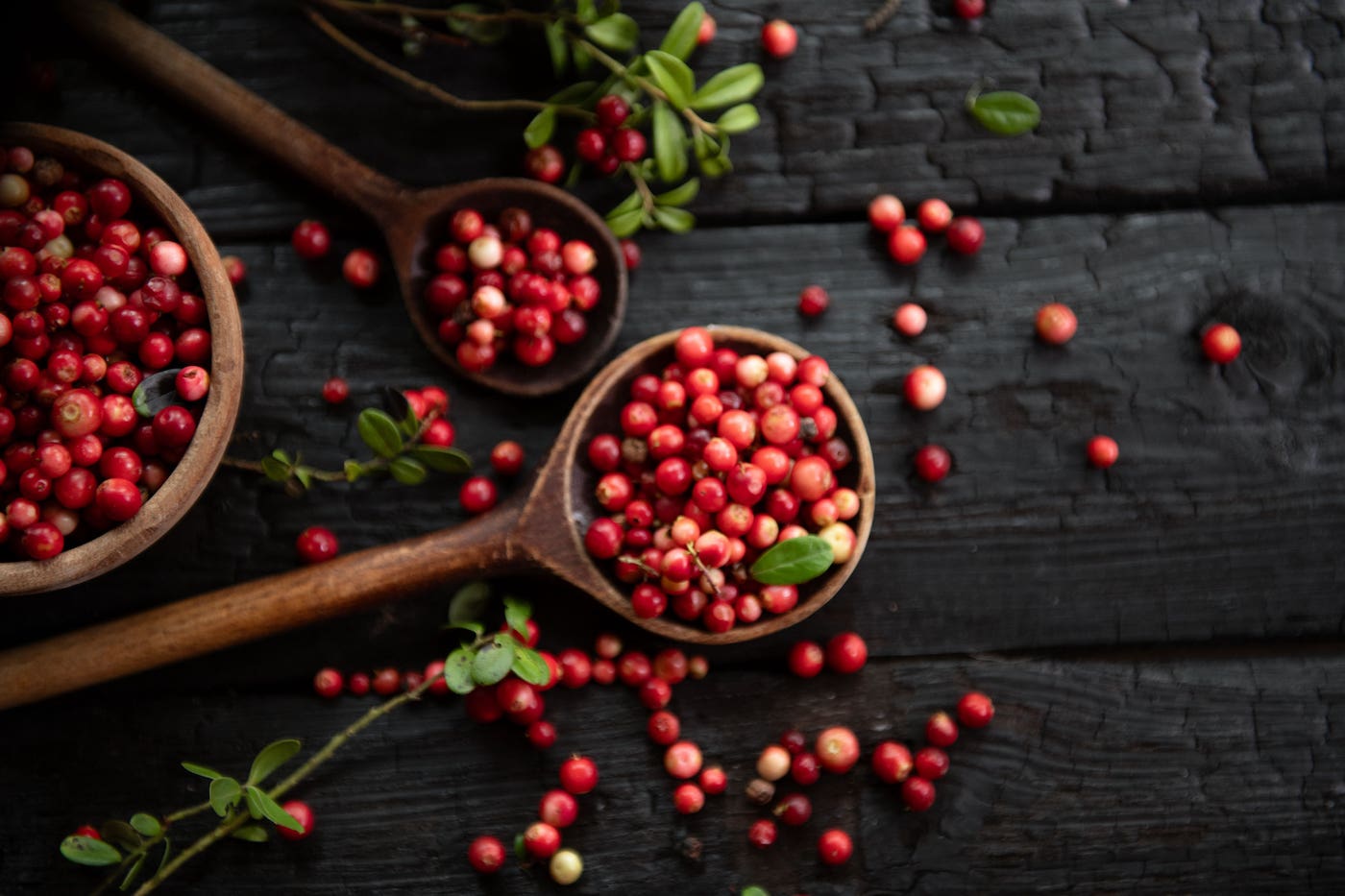
Cooking with Fresh Cranberries: Tips to Take Them Beyond the Holiday Season
Cranberries add a splash of color and a dash of tart flavor to holiday spreads. But what about the rest of the year? There’s no need to limit cooking with cranberries to just a few short months, when you know how to select, store, and use them to kick up the flavors of everyday recipes. Read on to learn how to get more cranberries in your cooking—winter, spring, summer, and fall.
What Are Cranberries?
Cranberries are one of only a handful of fruits that are native to North America. Like their blueberry cousins, cranberries are true berries, with several seeds encased in a single fruit. They’re also rich in antioxidants, particularly anthocyanins. In fact, cranberries’ A-type proanthocyanidins are the compounds that have been shown to fight E. coli and help prevent urinary tract infections.
Bite into a fresh, raw cranberry and you’ll know right away what sets them apart from other berries. A cranberry’s flesh is crisp like an apple and has a sour, almost citrus-like flavor. Inside, there are four hollow cavities, a botanical feature that causes cranberries to float in water.
How Are Cranberries Grown and Harvested?
Cranberries thrive in damp, loamy (sandy) soil and are grown in bogs, not fields. As the fruits develop, they grow large, firm, and plump and turn from white to bright crimson as they ripen.
When it comes time to harvest the ripe cranberries, the bogs are flooded with water until the berries float. Then, they’re shaken off their stems by a machine called an agitator, and more water is added to the bogs so the berries can be gathered and processed without damaging the vines below. The cranberry harvest is a crimson wonder as millions of bright berries are corralled manually so they can be cleaned and shipped for sale. It’s so spectacular that bogs of ripe cranberries can even be seen from space!
Fresh Cranberry Shopping and Storage
Fresh cranberries are harvested from September to early November and usually remain on produce displays until the end of January. When shopping for fresh cranberries, look for bags or containers of fruits that are plump, firm, and deep red with no signs of wrinkling. White cranberries are underripe and lack flavor, so avoid batches with pale or cream-colored fruit.
How Long Do Fresh Cranberries Last?
Stored in their packaging in the fridge, fresh cranberries will keep for up to three months. Rinse and drain just before using.
Can You Freeze Fresh Cranberries?
Fresh cranberries freeze well, losing little of their taste or texture in cold storage. These extended storage possibilities are good reasons to grab a couple of extra bags in the fall to use fresh through the winter and freeze for the rest of the year.
Cooking with Fresh Cranberries
When fresh cranberries are cooked, they release all their sweet-tart flavor and the jammy goodness (from natural pectins) that makes cranberry sauces and relishes so popular at Thanksgiving. Use them to add zingy flavor to all kinds of desserts and help thicken pie and cobbler fillings. A handful of fresh cranberries tossed and roasted with a vegetable medley at the start can provide sour power that’s similar to a squeeze of lemon juice.
Sliced, raw fresh cranberries also make a tangy addition to grain bowls and salads and blended raw cranberries give salad dressings a sharp, fruity kick.
Cooking with Dried Cranberries
The most important thing to know about cooking with dried cranberries is to choose fruits that are sweetened with apple juice or another natural sweetener—not sugar. Sugar-sweetened dried cranberries are sometimes coated in oil to keep them soft and prevent clumping, so it’s important to check the label before you buy. After that, anything goes! Add the dark, wrinkled morsels anywhere you want a touch of sweet-tart flavor and a bit of chewy texture.
Our Favorite Fresh Cranberry Recipes
Sauces, relishes, salads… and, of course, desserts! You’d be surprised by how many dishes can benefit from the sour power of fresh cranberries! Here are a few to try.
- Farro Cranberry Squares
- Vegan Peach-Cranberry Cobbler
- Cranberry-Orange Bread Pudding
- Purple Potato Cake with Autumn Fruits
- Cranberry-Kumquat Chutney Recipe
- Polenta with Pears and Cranberries
- Cranberry Carrot Cake with Chocolate Ganache
- All-Things-Thanksgiving Wraps
- Savory Meatballs with Cranberry Glaze
- Sweet Potato Casserole with Herbed Mushroom Stuffing
About the Author

About the Author
Mary Margaret Chappell
Join our mailing list
Get free recipes and the latest info on living a happy, healthy plant-based lifestyle.
By providing your email address, you consent to receive newsletter emails from Forks Over Knives. We value your privacy and will keep your email address safe. You may unsubscribe from our emails at any time.
